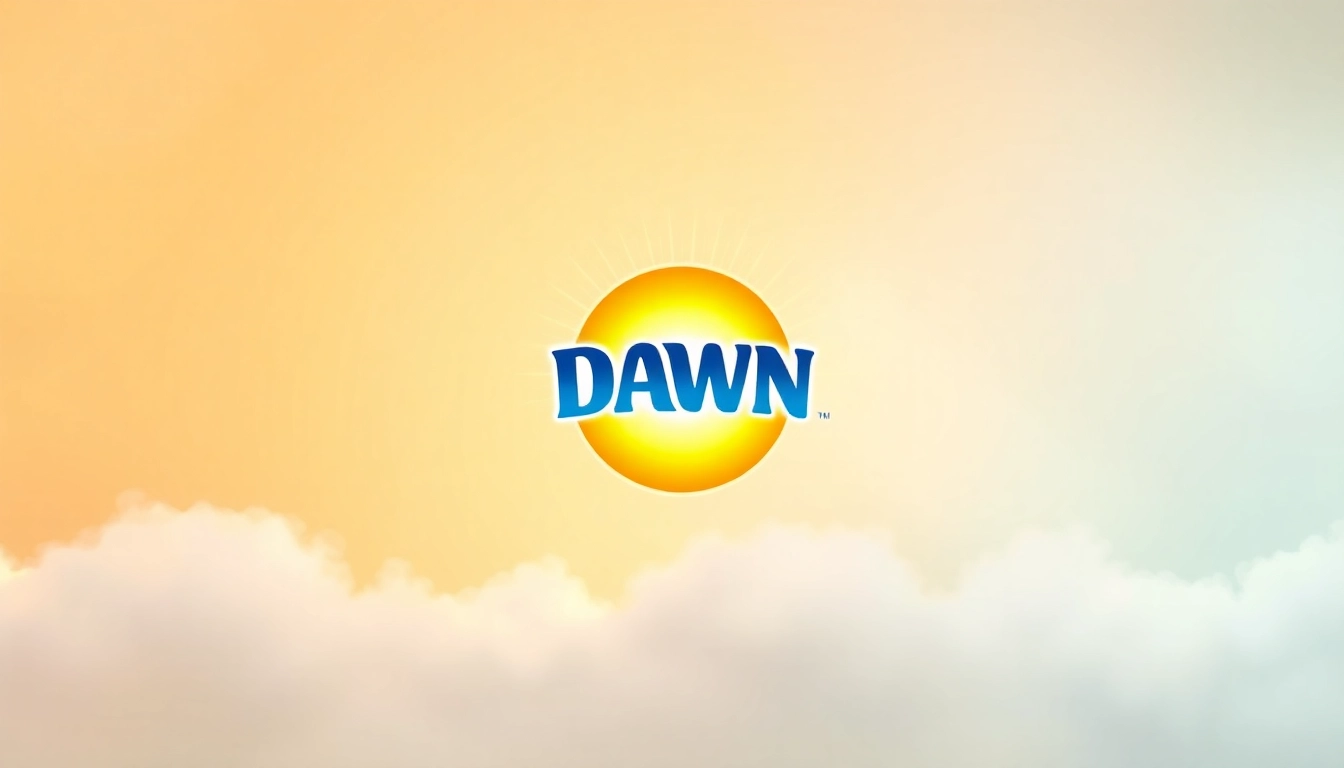An Overview of the Dawn Logo
The dawn logo serves not only as a visual identifier but also as a representation of a brand’s identity, values, and aspirations. To understand its significance, we must delve into its history, design principles, and its evolution over time. The dawn logo is not just a graphic; it is a narrative, telling a story of creativity, branding, and market presence. This article aims to unpack these layers, providing insights into the design and function of the dawn logo across various contexts.
History and Evolution of the Dawn Logo
The journey of the dawn logo began at a time when branding was becoming a crucial element for businesses seeking to distinguish themselves in the marketplace. As industries evolved, so did the logos that represented them. The dawn logo reflects this evolution, showcasing various design iterations and strategies utilized over the years. Each version not only reflects the brand’s changing identity but also hints at the shifting trends and consumer expectations within the market.
For instance, early iterations often leaned towards more complex designs, incorporating intricate details that emphasized craftsmanship and reliability. Over time, simplicity gained importance as brands aimed for immediacy in communication. The latest evolution of the dawn logo emphasizes clarity, easily allowing consumers to recognize and connect with the brand at a glance.
Key Visual Elements of the Dawn Logo
Understanding the components that make up the dawn logo is crucial in grasping its impact. Key visual elements include:
- Color Palette: Colors evoke emotions and influence perceptions. The dawn logo often utilizes colors that resonate with feelings of warmth, reliability, and positivity.
- Shapes and Lines: The flow of lines can communicate movement and dynamism, while shapes can signify stability or innovation depending on their form.
- Typography: The font used in the dawn logo is not only about readability but also about conveying the brand’s personality—whether playful, serious, modern, or traditional.
These elements together create a distinct visual identity for the dawn logo, allowing it to stand out in a crowded market while still resonating with core brand values.
Importance of Brand Recognition through the Dawn Logo
Brand recognition is crucial for businesses, and the dawn logo plays a pivotal role in this process. When consumers can easily identify a brand, it fosters trust and loyalty. The visual consistency encapsulated in the dawn logo ensures that the brand remains top of mind when customers are making purchasing decisions.
Moreover, a well-recognized logo helps differentiate a company in the competitive landscape. It also facilitates word-of-mouth marketing, as customers are more likely to share their experiences with a brand that has a memorable logo. This recognition can ultimately lead to increased sales and market share.
Design Principles Behind the Dawn Logo
Color Theory in the Dawn Logo Design
Color is a vital aspect of logo design. In the case of the dawn logo, color choices should not only appeal to aesthetics but also align with psychological triggers associated with colors. For example, blue often conveys trust, green represents growth, and yellow radiates positivity. Understanding color theory helps in selecting shades that evoke the desired response from the audience.
Furthermore, strategic color combinations can enhance visibility and recognition across various platforms, from digital spaces to print media. The differences in color perception among cultures and demographics should also inform color choices, ensuring that the dawn logo appeals to its intended audience.
Typography Choices for the Dawn Logo
Typography is more than just font selection; it’s about creating a voice for the brand. The choice of typeface in the dawn logo functions to communicate the brand’s personality and values. For instance, sans-serif fonts may convey modernity and accessibility, while serif fonts suggest tradition and reliability.
Additionally, typography must complement the logo’s overall design. The right font will enhance readability while contributing to the desired brand identity. Consistency in typography across all platforms is essential to reinforce brand recognition and foster trust with consumers.
Iconography and Its Impact in the Dawn Logo
The use of icons in logo design can enhance visual communication. In the context of the dawn logo, an effective icon can encapsulate the brand’s messaging succinctly and memorably. Icons serve to simplify concepts that may be complex, providing immediate understanding.
When integrating iconography into the dawn logo, designers should consider how well the icon can translate across various mediums. An effective icon should retain its integrity and recognition whether viewed on a website, mobile app, or physical product packaging.
Creating Your Own Dawn Logo
Inspiration Sources for Dawn Logo Designs
Creativity can often be sparked by looking at existing works. Here are a few sources for inspiration when conceptualizing a dawn logo:
- The natural world: Observing colors, shapes, and patterns found in nature can lead to unique insights.
- Art and design trends: Keeping an eye on current trends can help situate your logo within a contemporary context.
- Historical references: Looking at the evolution of existing logos can provide insight into what has been effective.
- Consumer feedback: Engaging with your target audience can offer direct insights into their preferences and perceptions.
DIY Tools for Crafting a Dawn Logo
Creating a logo has never been more accessible than it is today, thanks to various DIY tools available online. Some popular tools include:
- Canva: Particularly user-friendly, Canva offers templates and customization options suitable for beginners.
- Adobe Spark: This tool allows for more advanced design capabilities while still being accessible to novices.
- LogoMaker: Focused entirely on logo creation, it offers a straightforward interface for creating logos from scratch.
These tools can help ensure that anyone can create an effective dawn logo without needing extensive design skills.
Common Mistakes When Designing a Dawn Logo
While the process of creating a dawn logo can be exciting, it can also pose challenges. Here are some common pitfalls to avoid:
- Overcomplication: A logo should be simple enough to be recognizable at various sizes.
- Lack of Versatility: Ensure the logo works well in both color and black-and-white formats.
- Ignoring the Target Audience: Design with the audience’s characteristics and preferences in mind.
By being aware of these potential errors, designers can create more effective logos that resonate with consumers.
The Role of the Dawn Logo in Marketing
Integrating the Dawn Logo into Brand Strategy
The dawn logo is more than a mere graphic; it is an integral part of the overall brand strategy. For successful integration, the logo needs to be present across all marketing channels, including newsletters, social media, websites, and promotional materials.
Consistent use of the dawn logo helps create a cohesive brand presence that enhances consumer trust. Marketers should develop guidelines that dictate how the logo should be used across different platforms, ensuring uniformity in size, coloring, and placement.
Case Studies of Effective Dawn Logo Campaigns
Examining successful campaigns can illuminate the various ways the dawn logo can be utilized to enhance brand visibility. In many cases, campaigns that incorporate the logo consistently across diverse media platforms lead to increased brand recall and customer engagement.
Studying these case studies might show that successful campaigns often build a narrative around the logo, integrating it with emotional storytelling, customer testimonials, or impactful visuals that correlate with the brand message.
Measuring Impact of the Dawn Logo on Brand Success
To assess the effectiveness of the dawn logo, businesses should establish clear metrics. Key performance indicators might include brand recognition surveys, social media engagement analytics, and overall sales growth trends following a rebranding featuring the logo.
Longitudinal studies can also provide insights into how the dawn logo has impacted consumer perceptions over time. Utilizing these metrics allows brands to refine their strategies further based on audience feedback and performance data.
Future Trends in Logo Design with the Dawn Logo
Sustainability and Ethical Considerations in Logo Design
As consumers become increasingly conscientious about sustainability, brands must reflect these values in their logos. Future designs of the dawn logo might incorporate elements that signal eco-friendliness, such as natural colors or motifs inspired by nature.
Ethical considerations in design extend to elements like sourcing materials responsibly and ensuring that logo designs do not propagate harmful stereotypes. By being mindful of these issues, brands enhance their credibility and deepen connections with consumers who value ethical practices.
The Rise of Minimalism in Logos like Dawn Logo
Minimalism is not just a design trend; it’s a philosophy aimed at stripping away unnecessary elements to focus on the essence of the brand. The dawn logo, in its evolutionary path, might adopt such minimalistic principles to create cleaner, more straightforward representations.
This trend can lead to increased versatility in branding, allowing logos to work seamlessly across various platforms and sizes without losing their essential character.
Adaptive Logos in the Digital Age for the Dawn Logo
In a rapidly changing digital landscape, adaptive logos are becoming more important. Such logos may adjust in size, color, or complexity based on the platform or context, ensuring consistent branding across diverse media.
The dawn logo can take advantage of this trend by becoming adaptable, ensuring that it maintains its effectiveness regardless of the medium in which it’s displayed.



